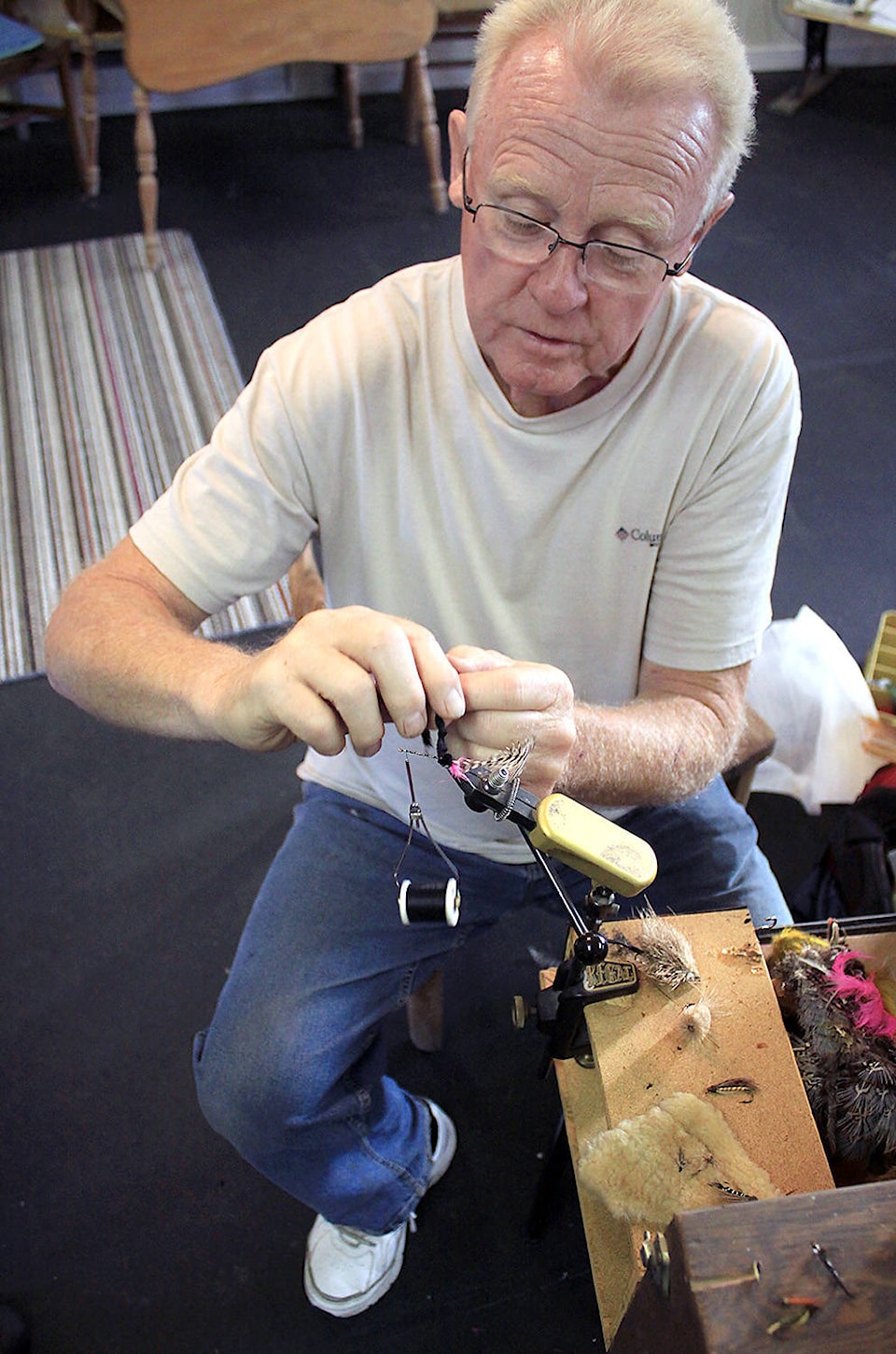The sport of fly fishing is quiet, calming and very successful when done right.
That was some of what those interested in the sport found during an instructional course presented by Bashaw’s resident expert, Dale Baden.
Baden spent the evening of Aug. 15 at the Bashaw Heritage Cultural Centre imparting his decades of knowledge to those that showed up.
That included discussing how to best catch the kind of fish a person is hoping to land, what kind of fly hooks to use, how to cast properly and taught the techniques of tying various types of flies.
“A person needs to see what the fish are eating, that’s when you will excel at catching them,” he said.
“Fish want to expel the least amount of energy for a meal, so if you can find what’s in season and simulate that food, it’s not that difficult to catch what you want.”
Baden explained most fish are primarily after insects — ranging from grasshoppers to beetles to various larvae — though some species are known to go after larger food like small mice and minnows.
“I’ve had experience where I caught pike with a mice wet fly and the fish were ferocious for it,” he said, adding the fly worked as the imitation deer hair helped it bubble and attract the attention of the pike.
Simulating movement is one way to get the fish to notice the fly, but Baden explained there is another manner to do it and it can be built right into the fly.
“Attractants that create a flash or are iridescent (luminous colors that seem to change when seen from different angles) ‘catch’ the eye of the fish,” he stated.
“It’s about making it look like an easy meal for the fish and movement or an attractant will help with that.”
Baden, who admitted his fly fishing passion began several decades ago and saw him accumulate thousand of dollars worth of gear, estimated he used to make from 100 to 500 flies over a winter.
However, over the last few years, there hasn’t been the need and figured his knowledge needed to be shared with people, which was part of the reason he agreed to provide the introductory course as a supplement to the fly casting evening he provided last summer.
Baden still has his favourite flies and feels tying them is just as captivating as catching fish when fly fishing.
“Sitting down and tying some midges or black beetles is just as interesting for me,” he said.
As for the material used for the flies, he still has a big stockpile despite not doing it as much anymore — much of it garnered from friends that hunt, items gotten from fishing stores some time ago though a lot now come from a place a person may not believe.
“Sure, you can get some material — especially attractants — from specialty places, but I find stuff at the dollar store works as well or better at far less cost,” he stated.
“Though some items like pheasant or rooster hackle are definitely hard to imitate, so you are better off finding the real thing if possible.”
He did get to demonstrating how to make a fly, specifically the Wooly Worm that simulates a caterpillar, which was surprisingly simple. All it took was winding some thread onto the hook in a manner so it would not come undone, then winding more thread to hold a piece of wool on, followed by winding a rooster hackle onto the hook before using the thread to adhere the end of the hackle and concluding with a build up of thread on the head to keep it all together.
Baden then also discussed how important the weight of the lead and line are plus what type of reels and rods are best for casting.
